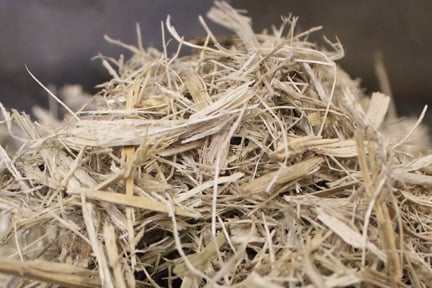Sugarcane is an essential crop for maintaining sugar supply around the world, accounting for the lion’s share of sugar production. From beverages to food products, sugarcane provides the sugar we need to fulfill the growing demand for certain products.
While sugarcane has been an essential crop for centuries, only recently has it begun to add value as far more than a supply of raw sugar. Recent advances in technology have allowed sugarcane and its related by-products to be processed into all sorts of useful materials and products, including energy, sustainable packaging, and more.
Two by-products in particular, offer significant value in the form of energy and nutrients: bagasse and mill mud.
Bagasse
After the sugarcane plant has been harvested, it is pressed to release the raw sugar contained within. Once the sugar has been extracted, the resulting leftover material is a fibrous plant matter, referred to as bagasse.
Bagasse has come to serve as a valuable fuel source for the sugarcane processing industry. Considered a biomass product, bagasse can be burned and converted into electricity, or further processed into an ethanol product. Bagasse has been important for energy generation for centuries, but only recently has it become more commercially available as an alternative fuel source. Utilizing bagasse as a source of biofuel has allowed sugarcane processing plants to be self-sufficient in providing their own energy. In fact, bagasse can provide so much energy for sugarcane processing plants, that they often have energy left over to sell back to the grid. Furthermore, advancements in cellulosic ethanol and biofuel production have made it possible to produce liquid fuel that can be used in cars, tractors, and the like.
Before bagasse can be processed into biofuel, however, it first must be dried. Bagasse left over from the sugar extraction process still contains a high concentration of moisture, making it difficult and inefficient to burn. In order to be processed into biofuel, the bagasse must first be dried. For this reason, a bagasse dryer is employed to bring the product down to the desired moisture level, as well as create a more uniform moisture level, ideal for burning.
Mill Mud
Mill mud is also a by-product of sugarcane processing, and is produced in significant amounts, requiring disposal and management measures.
Traditionally, mill mud has been treated much like manure, being spread on nearby sugarcane fields for the value it offers as a soil additive. Not only does mill mud provide the nutrients necessary for plant growth, but it also improves physical soil properties, and can help to raise soil pH.
Mill mud bears a striking resemblance to manure and its associated problems. While mill mud is undeniably beneficial as a soil additive, just like manure, too much can yield problems in the way of run-off, mismanaged crop nutrients, and other related problems. Furthermore, mill mud is produced at a rate that far exceeds the demand, creating over-application and stockpiling problems, and ultimately a need for better management solutions. Mill mud also contains traces of heavy metals, which, in high amounts, could be detrimental to the soil and surrounding environment. For this reason, more research on the long-term effects of continuous application of mill mud is needed.
Just like manure, one potential opportunity for managing mill mud could be through granulation. Not only does granulation offer an opportunity to more closely control nutrient management, but it can also turn a difficult to handle material into a dry, granular product, which can be stored, or packaged for sale. Furthermore, a granular mill mud product could be stored significantly longer than unprocessed mill mud, and would improve application with a spreader, since a granular product is more easily applied. Together, this would help to alleviate the problems associated with the over-application of mill mud due to excess supply.
As can be seen, sugarcane is a growing opportunity for a sustainable way of life. Not only can sugarcane provide the world’s increasing demand for sugar, but the by-products left over from processing sugarcane can be processed into all sorts of valuable products and materials. Bagasse offers significant opportunities in providing energy not only for sugarcane processing plants, but for a growing number of applications as well. Mill mud offers opportunities in enhanced nutrient management through granulation. As technology increases, the utilization of sugarcane by-products such as bagasse and mill mud will play an increasing role in providing the necessary tools for growing economies and sugarcane producing regions.
FEECO is highly experienced in taking problem materials and wastes, and turning them into value-added, marketable products. Our lab facility is well-equipped to run batch granulation tests for those looking to turn organic wastes and by-products into granular, organic-based fertilizers. We also offer feasibility testing for those looking to dry bagasse.
To learn how FEECO can help you with your bagasse or organic waste material, contact us today.



